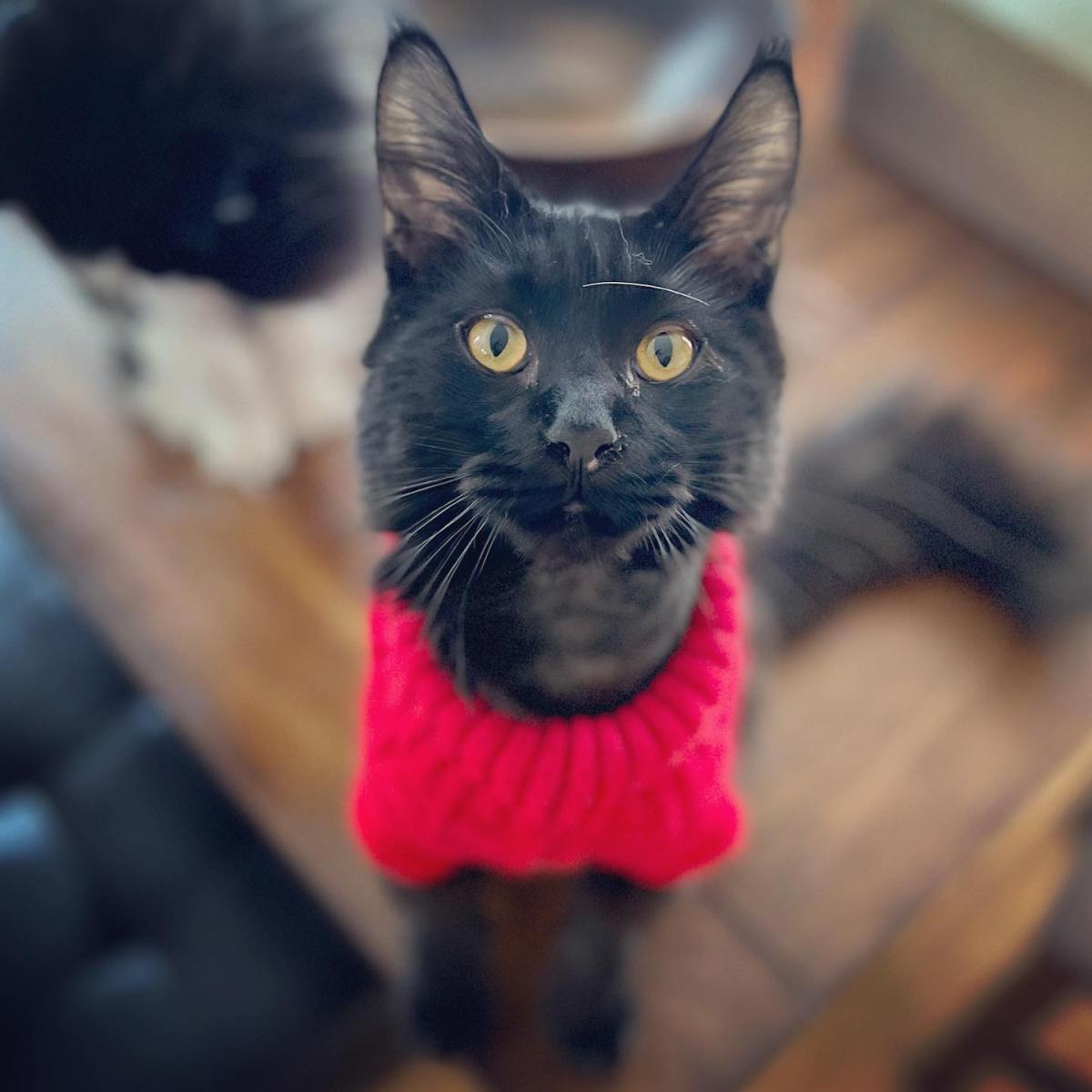
Double Trouble
The initial diagnosis for Dan, a five-month-old kitten, was bad enough.
He had a complex congenital heart disease that was causing a heart murmur. Dan had a large PDA (patent ductus arteriosus). The blood vessel flowing from his aorta into the main pulmonary artery was not closing when it should and if left untreated, it could cause severe fluid overload and heart failure.
“It’s not the most common congenital disease in cats, but’s it’s also not rare,” said Dr. Michael Pabon, cardiology resident in the Hixson-Lied Small Animal Hospital, “but it was a cause for concern when combined with his other issue.”
That issue was a bilateral branch pulmonary artery branch stenosis where the two main branches of the vessel taking blood to his lungs were narrowed. Put both issues together and Dan was a very sick kitty.
“It was logical that if we could fix the PDA then we could fix, or at least improve, two issues at once,” Pabon said.
The Iowa State cardiology team diagnosed the issue with a combination of echocardiography and a CT scan.
“We had a strong suspicion what the issue was but didn’t know for sure until we did the CT scan,” Pabon said. “The PDA was very big which was allowing more blood to be recirculating.
“There was a lot of blood trying to go through those narrowed vessels.”
But Dan is a small kitten and his size and complex morphology were working against him. The hospital’s soft tissue surgery unit performed the procedure to fix the PDA. Dr. Adrien Aertsens, clinical assistant professor, did the surgery along with resident Dr. Helen Tsoi.
The surgical team opened Dan’s chest by incising between two ribs and gently elevating a major nerve that was overlying the PDA. This was necessary in order for the surgeons to be able to dissect the PDA with small forceps and what Aertsens called surgical “Q-tips.”
“This was necessary to avoid any risk of perforating the PDA or the surrounding major vessels,” he said. “Any breach into these vessels could have led to a quick and fatal hemorrhage.
“This procedure was more challenging than usual because we perform it less commonly on cats.”
Dan came through the surgery like a champ and was released to go home soon afterwards. Pabon says that without the surgery Dan would have developed heart failure within a year and his lifespan would have been considerably shorter.
“His prognosis is excellent,” Pabon said. “It was a very interesting case, the first one like this that I’ve seen.
“It was a great learning experience for everyone involved in the multiple departments that treated Dan.”
